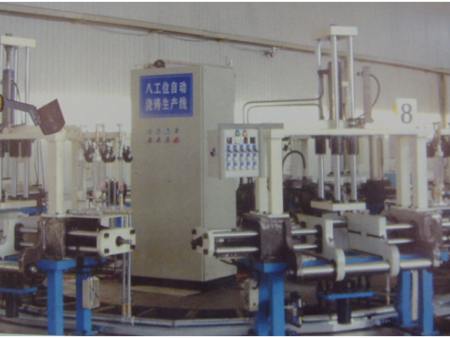
Low-voltage casting machine low-voltage high-power motor rotor mold design
In recent years, the application range and frequency of low-voltage motor rotor structure has been relatively large, and it has gradually become one of the indispensable equipment in the field of process production. In order to maximize the working efficiency of low-voltage high-power motor rotors, many industrial production enterprises use horizontal die-casting machines To meet its demand for capacity modulus, so as to achieve high efficiency.
In the past, the motor industry used the method of centrifugal casting to cast aluminum rotors for motors, which was low in efficiency and high in cost. However, with the advancement of technology, the emergence of all-in-one machines has led to the development of die-casting technology, which has replaced traditional aluminum casting technology and has become indispensable in the field of motors. missing technology.
Mold Design
Generally speaking, the position of the vane of the cast aluminum rotor is relatively high, and the existence of other structures also makes the exhaust effect poor. Therefore, in order to ensure the smooth filling of the aluminum liquid in the cavity, multiple point gates can be selected, respectively Aluminum liquid is injected at the top of the blade. When doing this work, we must pay attention to the area of the point gate. This area must be accurately calculated, and the accurate result can be continued. From a physical point of view, the area of this point gate is the same as that of the casting The aluminum quality filled in the aluminum rotor, the filling time, the density of the aluminum liquid and other data are related, which must be considered in the calculation. In addition to the pouring and overflow exhaust structure, the structural design of the die-casting mold is also very important. The horizontal type mentioned here The design of the die-casting low-voltage high-power motor rotor mold, so the cast aluminum rotor has its particularity in structure. Therefore, when determining the design plan, it is necessary to fully consider the forming and die-casting process, the internal and external structure of the mold, the cost of mold manufacturing and other related matters.
2-stage injection superimposed stroke
The design of the two-stage ejection stacking stroke can be said to have played a decisive role in the entire cast aluminum rotor structure, breaking through the limitations of traditional horizontal die-casting machines, overcoming shortcomings, and also playing an important role in ensuring a reasonable stroke. This is A new two-stage hydraulic cylinder ejection superimposed stroke structure. This two-stage ejection superimposed stroke can meet the requirements of horizontal die-casting low-pressure high-power motor rotor long stroke. The two-stage hydraulic cylinder ejection superimposed stroke structure has outstanding advantages It can be adjusted according to the length of the cast aluminum rotor required for actual production. Generally, there is a control switch in the stroke structure of the first-stage hydraulic cylinder, which is the center of adjustment. Generally, the second-stage hydraulic cylinder does not have an ejection stroke Control the switch, but it can be ejected through the second-stage hydraulic cylinder, so that it will not cause an error at the first stage, and can ensure the smooth operation of the entire ejection superimposed stroke structure. When installing the cast aluminum rotor and mold, the push rod of the mold must first be Take it out together with the push rod guide sleeve, and then introduce the push rod and piston rod of the second stage hydraulic cylinder into the mold.
